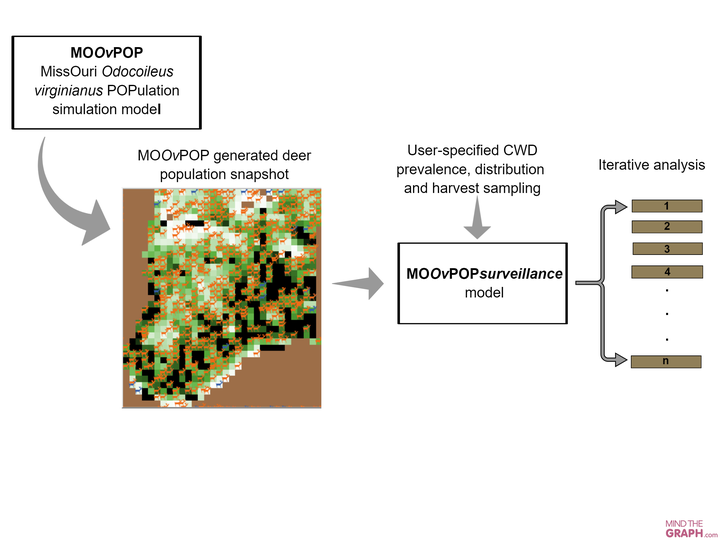An agent-based framework for improving wildlife disease surveillance: A case study of chronic wasting disease in Missouri white-tailed deer

Abstract
Epidemiological surveillance for important wildlife diseases often relies on samples obtained from hunter-harvested animals. A problem, however, is that although convenient and cost-effective, hunter-harvest samples are not representative of the population due to heterogeneities in disease distribution and biased sampling. We developed an agent-based modeling framework that simulates deer population in an user-generated landscape. A snapshot of this realistic deer population is then used to simulate disease (CWD) prevalence and distribution, harvest effort and sampling for CWD testing. This framework incorporates real-world heterogeneities in disease distribution, hunter harvest and harvest-based sampling, and therefore can be useful in informing sustainable and efficient wildlife disease surveillance strategies. (DeAngelis D and Zhang B: F1000Prime Recommendation of [Belsare AV et al., Ecol Modell 2020 417:108919]. In F1000Prime, 06 Feb 2020; 10.3410/f.737304849.793570504)